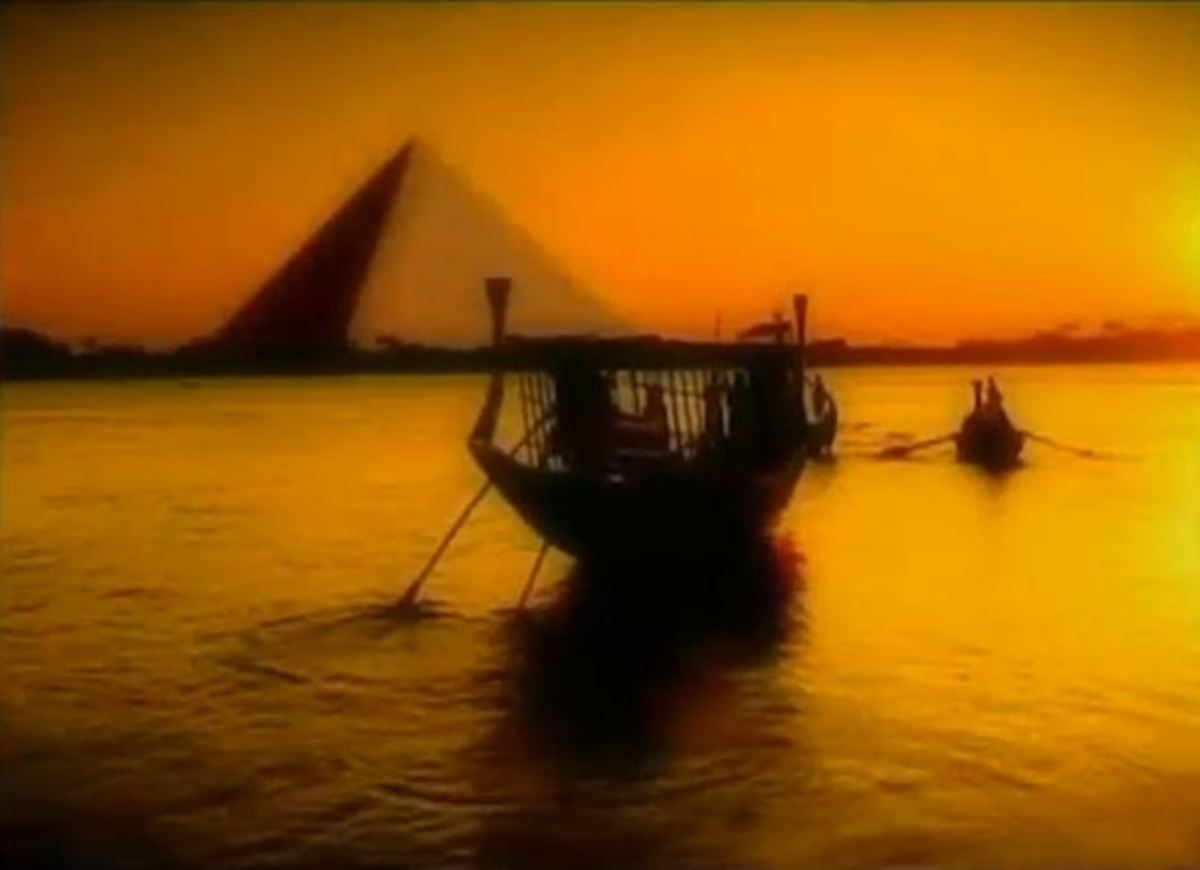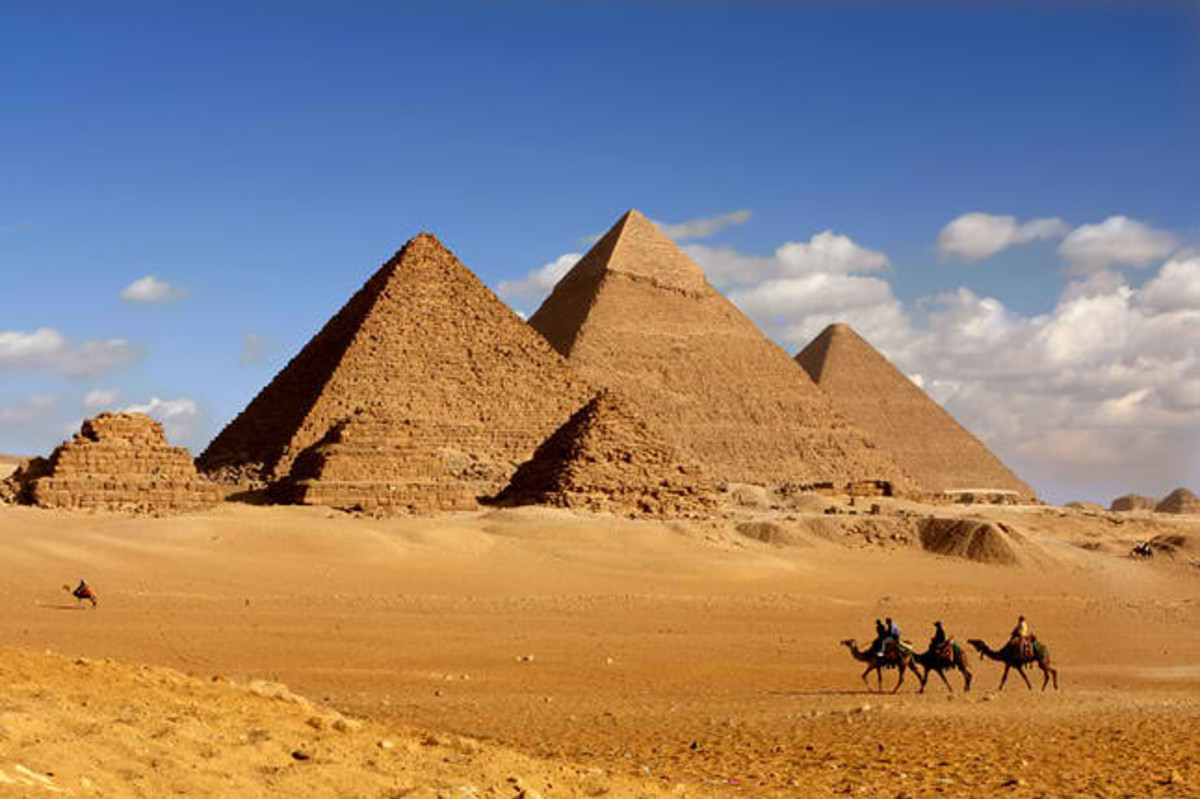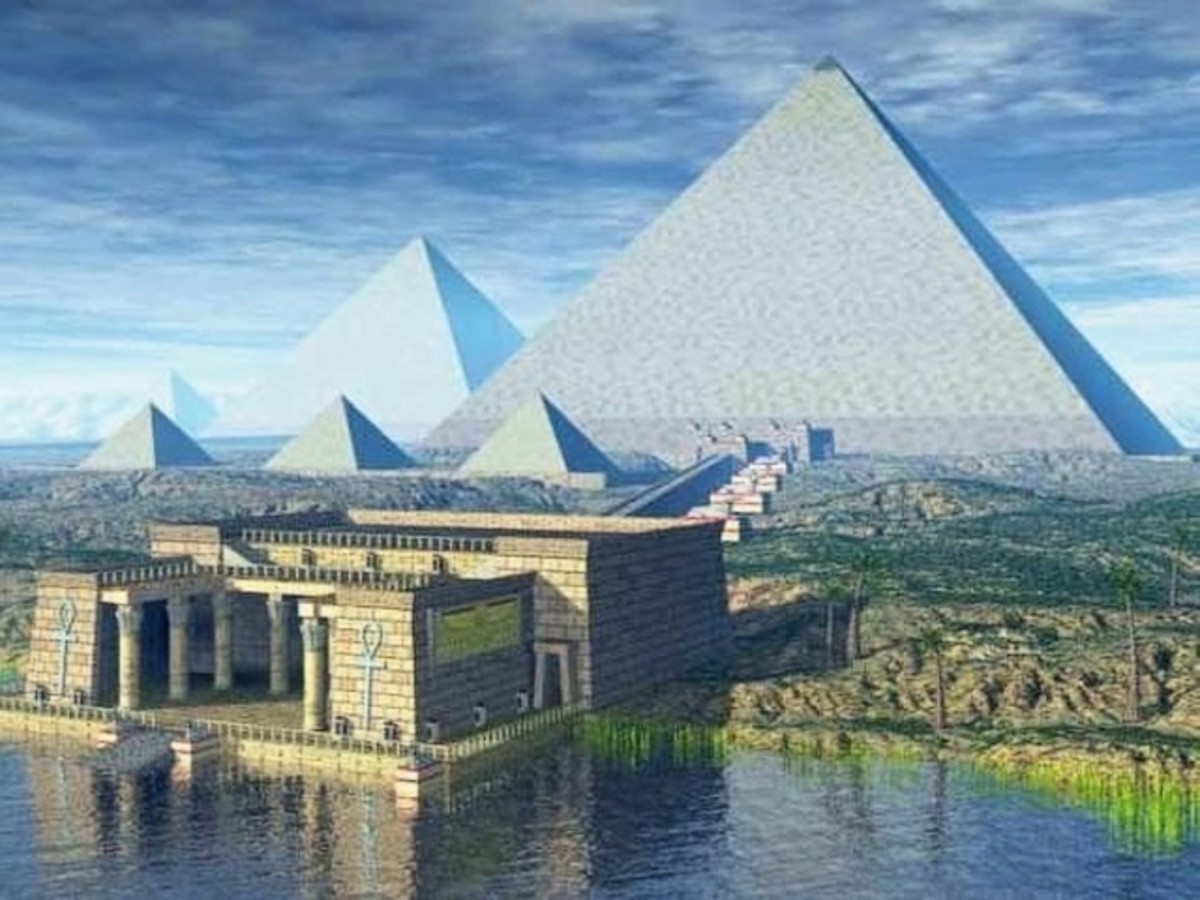Reverence to the Sun:
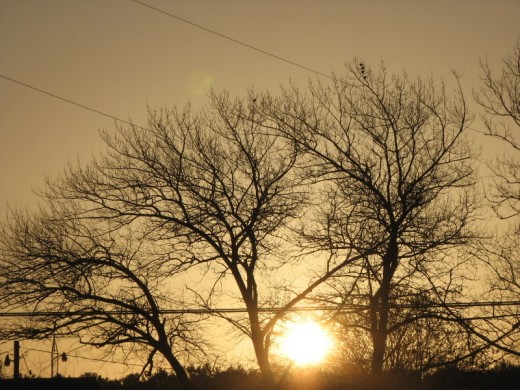
There is no heavenly object which influences life on Earth more than the Sun. After all, the Earth revolves around the Sun. In the solar year, the 365 plus one days incorporated by a leap year every four years keeps our calendar in sync with the Sun.
Watching the stars and planets closely, ancient peoples looked to the skies in search of order and meaning. Holding particular prominence was the Sun, revered as much for its cyclical wanderings across the horizon providing reliable patterns of time and making nature predictable as its source of light and warmth. People divided the calendar year into four seasons based on their observations. Each season is centered on one of the four key dates which mark the Sun’s annual travels.
The Summer and Winter Solstices, which are the year’s longest and shortest days, occur on approximately June 22nd and December 22nd in the Northern Hemisphere. The Spring and Fall Equinoxes, which are the two times during the year when the Sun crosses the equator and day and night are equal in length, occur on approximately March 21st and September 23rd in the Northern Hemisphere.
Humans have paid their respects to the Sun with special rites and festivals on these days throughout history. Many peoples, including the Maya, French Churchmen, Chinese Astronomers, American Indians as well as many others, have created buildings which were specifically designed to mark these dates. Each of these structures are in themselves a sacred calendar cutting across all barriers of time and culture while manifesting their obeisance to the gods as well as the cycles of life and death and the mystical seasons of the year.
Mayan Symbol of Reverence:
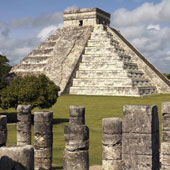
The Temple of Kukulkan (El Castillo):
Boasting a series of square terraces with stairways ascending each of the four sides to the temple at the summit, sunlight pours through a north staircase on the west side of El Castillo twice a year. At both sunrise and sunset on the Spring and Autumn Equinoxes, the sunlight creates the shadow image of a serpent, an ancient Mayan symbol of rebirth and renewal.
El Castillo, “The Castle,” is a thousand year old pyramid which dominates the center of the Chichen Itza ruins in Yucatan, Mexico. “El Castillo” is the common name for this structure. A more proper name is the Temple of Kukulkan, the Mayan name for Quetzalcoatl meaning “plumed serpent.”
Chichen Itza means “at the mouth of the well of the Itza.” Itza, the name of an ethnic lineage group, is believed to have originated from the Maya “itz,” meaning “magic.” However, in Spanish, “Itza” means “Witches of Water” or “Brujas del Agua.” Combined together, many people come up with the translation “Magicians of Water.”
During its time, Chichen Itza was a major economic power in the northern Maya lowlands. Through its port site, Isla Cerritos, Chichen Itza was able to sell and attain resources from distant areas such as Central Mexico and Central America.
From one of the wells at this location, the Cenote Sagrado, there have been artifacts of gold, jade, pottery and incense recovered. According to archeological research, Chichen Itza fell somewhere around 1000 A.D. However, never becoming completely abandoned, the Cenote Sagrado continued to remain a place of pilgrimage. In 1588, Chichen Itza was a working cattle ranch.
Now federal property, the ruins of Chichen Itza were purchased by the state of Yucatan on March 29th, 2010. The site is maintained by Mexico’s National Institute of Anthropology and History, INAH.
Symbol of Reverence in Leinster, Ireland:
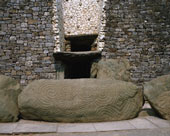
Newgrange:
Newgrange, a massive burial mound built by a tribe of Neolithic Irish farmers, still stands on a low ridge above the Boyne River in Leinster, Ireland. Newgrange was built more than 5,000 years ago, between the years 3100 and 2900 B.C., even before the ancient Egyptian Pyramids. The dead were laid to rest at the end of a 62 foot long stone passageway where no light permeates the majority of the year.
In this sanctuary, on a few mornings each winter while the days are at their shortest and darkest, a shaft of sunlight enters through a small opening above the tomb’s entrance, beaming down the long passageway. For only a few breathtaking moments, light fills the burial chamber, revealing a Stone Age cathedral of high-vaulted ceilings and intricately carved walls.
The dramatic illumination only occurs in the few days around the Winter Solstice when the Sun reverses its retreat from the Northern Hemisphere and the days begin to lengthen. Scholars believe the Irish farmers who created Newgrange laid out the more than 200,000 tons of stone to deliberately exploit the Sun’s position at this particular turning point in the solar year to exhibit reverence for the celestial calendar by designing this marvelous structure in precise astronomical relationship with the Sun. That being the case would mark these prehistoric architects as among the earliest humans to exhibit this reverence.
Egyptian Symbol of Reverence:

The Pyramids of Cheops and Chephren:
The Sun at the Summer Solstice sets directly between the ancient pyramids of Cheops and Chephren.
The Pyramid of Cheops is also called “The Great Pyramid of Giza” and/or “The Pyramid of Khufu.” It is the oldest and the largest and is the main part of a complex setting of buildings, including two mortuary temples in honor of Pharaoh Khufu. The Pyramid of Cheops is the oldest of the Seven Wonders of the Ancient World as well as the only one remaining largely intact. Believed to have been constructed as a tomb for Pharaoh Khufu, it took 20 years to build and was completed around 2560 B.C.
The Pyramid of Chephren is also called “The Pyramid of Khafre.” It is the second largest of the Ancient Egyptian Pyramids and is believed to be the tomb of Pharaoh Khafre.
There is much debate about how these pyramids were constructed. One theory is that they were built by moving huge stones from a quarry and dragging and lifting them into place. Some of the “stones” weigh in at about 10 tons!



